Search Results
Viewing: 1-41 of 41 | All
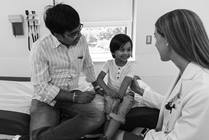
Blog
5 Questions Parents Need to Ask Before Leaving the Emergency Room
A sick child is every parent’s concern. Most aim to alleviate their kid’s discomfort at home and follow up with their pediatrician, but when an emergency room visit is required, that concern can become overwhelming.

Blog
Understanding Rhabdo: Why You Should Take Exertional Rhabdomyolysis Seriously
Exertional rhabdomyolysis (ER) or “rhabdo” is a rare, yet serious, and potentially fatal, condition if not recognized and treated appropriately. It is defined as the breakdown of normal skeletal muscle fibers due to injury or exercise.
Article
Exceptional Responders
The National Cancer Institute (NCI) has embarked on the Exceptional Responders (ER) Initiative to understand the molecular underpinnings of exceptional responses to treatment, primarily via chemotherapy, in cancer patients.
News
Injury Prediction Rule Could Decrease Radiographic Imaging Exposure in Children, Study Shows
In a study published today in The Lancet Child & Adolescent Health, researchers in the Pediatric Emergency Care Applied Research Network (PECARN) – led by Julie Leonard, MD, MPH at Nationwide Children’s Hospital –created a highly accurate cervical spine injury prediction rule. When applied, the rule decreases the use of CT by more than 50% without missing clinically significant injuries or increasing normal X-ray use.

Blog
Urgent Care or Emergency Department: Which One Is Right for Your Child's Needs?
Not so long ago, parents had two choices for after-hours medical care: wait for the doctor’s office to open or head to the local emergency room. Today’s parent has more choices, including urgent care centers, grocery store clinics and the newest player in town – the stand-alone ER.

Transportation
Motor vehicle crashes are one of the leading causes of injuries among adults and children in the United States. Every 15 minutes in the U.S. one person is killed and 66 are treated in an ER.
Research Employee Access
The following links are ONLY for current employees:
Craniosynostosis
Craniosynostosis is a medical condition where one or more of the openings (known as sutures) between skull bones have closed too soon. This will affect the shape of the skull. It can also mean that over time brain growth may be restricted. This could result in increased pressure on the brain.
Article
Using an Asthma Action Plan
Sit down with your doctor to develop an Asthma Action Plan. A plan can be very helpful, especially during an asthma flare-up.
Article
Diazepam Rectal Gel (Diastat)®
Your child’s healthcare provider or doctor has recommended Diastat® to help control some of your child’s seizures (Picture 1). It can be given by parents or other caregivers who know the child’s seizure patterns.

Article
Motor Vehicle Crashes
Motor vehicle crashes are one of the leading causes of injuries among adults and children in the United States. Every 15 minutes in the U.S. one person is killed and 66 are treated in an ER.
Pityriasis Rosea
Pityriasis rosea is a common skin problem in children and young adults. It often begins with a large scaly lesion called the “herald patch.”
Article
Center for Cancer Genomics at the National Cancer Institute (NCI CCG) Project Team
The BCR is a laboratory and biorepository within the Biopathology Center (BPC) that supports multiple cancer genomics projects for the Center for Cancer Genomics (CCG) at the National Cancer Institute (NCI) and other contracted entities.
News
Nationwide Childrens Hospital Will Open Close To Home Center at Diley Ridge Medical Park
Nationwide Children's Hospital will be expanding its Close To HomeSM Center network to southeast Columbus by offering services in the Diley Ridge Medical Park Medical Office Building.

Article
Fall Prevention
Falls are the most common cause of childhood injury in the home, leading to more than 1.3 million visits to the ER each year. Parents and caregivers should take steps to make their homes safer.
Article
Getting a Cochlear Implant
A cochlear (KOE-klee-er) implant is a device worn on the outside of the ear. It is for people with more severe hearing losses. It takes sounds from the environment, turns them into electrical signals, and sends them to the brain. Cochlear implants are different than hearing aids.

Condition
Tinea Versicolor
Tinea versicolor (TIN ee uh VUHR sih kuhl er) is a common rash caused by the overgrowth of microscopic yeast on the skin's surface. The rash looks like small, scaly spots.
News
A Single-Dose Cancer Immunotherapy via Gene Transfer
Researchers at Nationwide Children’s Hospital report proof-of-principle results for a new gene therapy cancer treatment. The off-the-shelf, single-dose immunotherapy serves as an alternative to CAR-T therapy and can be engineered to be on-demand.
Article
Simulation Program
Nationwide Children's Simulation Program provides hands-on experiential learning utilizing high-fidelity human patient simulators. Learn more about our Simulation Center.

Blog
Achalasia: Treatment Is Easier to Swallow
Achalasia is a rare disorder where the esophagus does not squeeze food down to the stomach properly. Procedures and surgeries aim to make the tight sphincter at the bottom of the esophagus more open, to let food pass into the stomach.
Article
Temporary Housing and Accommodations
When your child needs care at the hospital, we know that being away from home can be stressful and overwhelming. Learn more about temporary housing and accommodations.

Medicaid and Young Adult Trauma Patients
Trauma is the leading cause of death for young adults, and more than 30% of young adult trauma patients were uninsured before 2014. Has the Affordable Care Act, and the expansion of Medicaid in some states, had an impact on outcomes? A new study from Nationwide Children’s Hospital’s Abigail Wexner Research Institute helps answer the question.
News
Poison Centers Save More Than $1.8 Billion Every Year
The Central Ohio Poison Center at Nationwide Children’s Hospital and America’s 56 other poison centers save Americans more than $1.8 billion every year in medical costs and lost productivity, according to a report released last week by the American Association of Poison Control Centers
Article
What is Asthma?
Asthma is a disease of the lungs. When you have asthma, the airways are very sensitive to many things in the air. The airways may get smaller when you are around things that trigger your asthma. This is called a flare-up.
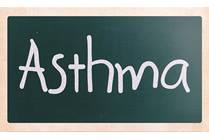
Blog
Back to School with Asthma
On average, 3 children in every classroom in America have asthma. While there is no cure, almost everyone with asthma can control their symptoms and lead a normal life without too many restrictions.

Blog
Questions to Ask When Choosing a Pediatrician
When you are expecting your first child, there are numerous decisions to be made. The list seems endless. Choosing which pediatrician will care for your sweet newborn should be near the top of the list.
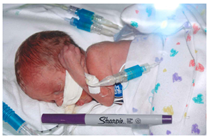
Blog
Gillian's Journey: One Micro-Preemie's Story of Hope
This story was shared by a Justice associate about her journey with Nationwide Children’s in support of the Give Hope Campaign. Eight years ago, Robyn and her husband, Jason, were delighted with the news of her pregnancy.

Article
Opioid Safety
While opioids are an effective option for pain relief following surgery or for the treatment of a chronic condition, they can also lead to addictive behavior and substance abuse problems if not properly managed and stored. Nationwide Children’s is dedicated to providing education and resources to help patients, parents and physicians safely prescribe, use, and dispose of opioids.
News
A New Paradigm for Treating Transcription Factor-Driven Cancers
In the current issue of Proceedings of the National Academy of Sciences, researchers from Nationwide Children’s Hospital describe a new paradigm for treating transcription factor-driven cancers.

Condition
Asthma
This Helping Hand™ covers asthma, which is a lung disease that can cause breathing problems. If your child has asthma, the airways in their lungs overreact to certain things, called triggers.

Blog
Urgent Care or Emergency Department for Childhood Injuries?
As the weather warms and kids head outdoors, the chance for injury rises. Where should families seek help when accidents occur? The answer depends on the nature of your child’s injury and the services offered in your community.
Article
Neurogenic Bowel Regulation
A child who has a neurogenic bowel cannot control when he or she has a bowel movement. Bowel control may not be possible, but bowel regulation can be done by following a daily schedule.

News
New Study Finds High-Powered Magnets Lead to Hospitalizations and Life-Threatening Injuries in Children
A recent study led by researchers at the Center for Injury Research and Policy and Emergency Medicine at Nationwide Children’s Hospital along with 24 other children’s hospitals across the country looked at nearly 600 cases of high-powered magnet-related injuries in the three years after high-powered magnets re-entered the US market (2017 to 2019).
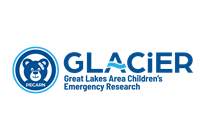
Specialty
PECARN
PECARN is the first federally-funded multi-institutional network for research in pediatric emergency medicine in the United States.

News
Saliva, Genomic Analysis Used to Identify Promising Biomarkers for Persistent Post-Concussive Symptoms in Children
In a study published in Frontiers in Public Health, researchers with the Center for Injury Research and Policy, Division of Sports Medicine, and the Steve and Cindy Rasmussen Institute for Genomic Medicine at Nationwide Children’s Hospital have demonstrated a method by which increased risk of persistent post-concussive symptoms (PPCS) in children with concussion can be identified. This could allow families and their care teams to better assess recovery time of children with concussion.
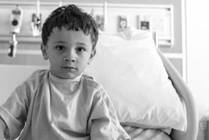
Specialty
Total Pancreatectomy with Islet Autotransplantation (TPIAT)
Nationwide Children’s is one of the few pediatric hospitals in the country to offer total pancreatectomy with islet autotransplantation (TPIAT), an innovative procedure designed to relieve pain and improve quality of life and to minimize risk of lifelong diabetes for children with
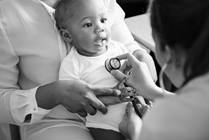
Article
EMS Outreach Program
Nationwide Children's Emergency Medical Services (EMS) Outreach Program provides expertise and leadership for EMS providers in 33 of the 88 counties in Ohio, making our pre-hospital catchment area the largest in the state.
